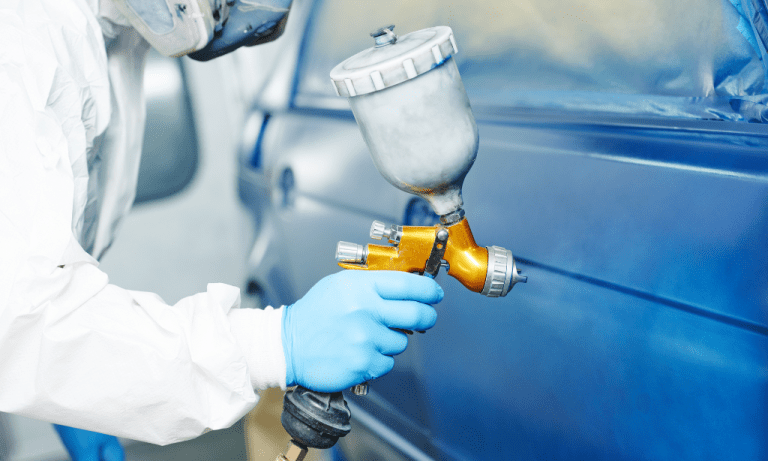Can Seafoam Hurt Your Engine? Discover the Shocking Truth!
No, seafoam cannot hurt your engine and is safe to use. As a fuel additive, seafoam helps clean deposits and improves engine performance without causing any harm.
It is a trusted product that many mechanics and car enthusiasts recommend for maintaining engine health. By using seafoam as directed, you can enhance fuel efficiency, reduce emissions, and prolong the life of your engine. Whether you are experiencing rough idling, stalling, or simply want to keep your engine running smoothly, seafoam is a reliable choice.
With its ability to dissolve varnish and carbon build-up, seafoam effectively tackles common engine issues, making it a popular choice among car owners. So, rest assured, using seafoam will not cause any damage to your engine.
Understanding Seafoam And Its Purpose
Seafoam has become a popular engine additive among car enthusiasts and mechanics alike. But what exactly is seafoam, and why is it used in engines? In this section, we will dive into the purpose of seafoam and explore how it claims to improve engine performance.
We will also address some common misconceptions about its safety.
What Is Seafoam And Why Is It Used In Engines?
- Seafoam is a petroleum-based product that is designed to clean and lubricate various engine components.
- It is commonly used to remove carbon deposits, sticky residues, and varnishes from intake valves, fuel injectors, and combustion chambers.
- By cleaning these components, seafoam aims to improve engine performance, fuel efficiency, and overall power.
- It can also help to reduce rough idle, hesitation, and excessive exhaust emissions.
How Does Seafoam Claim To Improve Engine Performance?
- Seafoam’s innovative formula works in three ways:
- Firstly, it acts as a detergent, loosening and dissolving carbon deposits and other residues that can hinder engine performance.
- Secondly, it helps to lubricate internal engine components, reducing friction and wear. This can result in smoother operation and enhanced longevity.
- Lastly, seafoam has a cleaning effect on the fuel system, helping to remove any build-up that may be restricting fuel flow or causing fuel-related issues.
Exposing The Common Misconceptions About Seafoam’S Safety
- Some people believe that seafoam can harm engine seals, gaskets, or other critical components. However, when used as directed, seafoam is generally safe for most engines.
- Another misconception is that seafoam can cause engine damage if too much is used. While it is important to follow the instructions carefully, using a reasonable amount of seafoam should not cause any harm.
- It is vital to note that seafoam is not a substitute for proper maintenance and should not be relied upon to solve all engine issues. Regular oil changes, air filter replacements, and other scheduled maintenance tasks are still necessary for optimal engine performance.
In the next section, we will explore the step-by-step process of using seafoam in your engine and provide some tips for maximizing its effectiveness. Stay tuned!
The Potential Risks Associated With Seafoam
Seafoam is a popular fuel additive that claims to improve engine performance and fuel efficiency. However, like any product, it comes with its own set of potential risks and drawbacks. In this section, we will delve into the impact of seafoam on various engine components and explore the hidden dangers that could arise from its usage.
Unveiling The Impact Of Seafoam On Engine Components:
- Fuel system: Seafoam can potentially harm the fuel system in a few ways. It has a solvent-like property that can loosen up deposits and contaminants in the fuel system. While this may initially seem beneficial, it can cause these particles to clog the fuel injectors and filters, leading to reduced fuel flow and engine performance.
How Seafoam Can Potentially Harm The Fuel System:
- Combustion chamber: Seafoam is often used as a combustion chamber cleaner to remove carbon deposits. However, excessive use or improper application can lead to negative consequences. The high concentration of chemicals in seafoam can cause the carbon deposits to dislodge all at once, potentially damaging sensitive engine components like valves or piston rings.
The Hidden Dangers Of Seafoam On The Combustion Chamber:
- Engine seals and gaskets: Seafoam’s powerful solvents can degrade rubber seals and gaskets over time. This can result in oil leaks and potential damage to critical engine components. It’s important to be cautious when using seafoam near these seals and gaskets to avoid unintended consequences.
The Negative Effects Of Seafoam On Engine Seals And Gaskets:
- Long-term consequences: While seafoam may offer short-term benefits, prolonged and excessive use can have detrimental effects on engine performance. Over time, the harsh chemicals in seafoam can wear down engine components, leading to reduced engine efficiency, increased fuel consumption, and even engine failure.
Examining The Potential Long-Term Consequences:
- Corrosion risks: Seafoam, if used improperly, can potentially cause corrosion of metal components within the engine. This can lead to irreversible damage and costly repairs. It is crucial to follow the manufacturer’s recommended usage instructions to minimize the risk of corrosion.
Corrosion Risks Due To Seafoam Usage:
- Impact on catalytic converters and oxygen sensors: Catalytic converters and oxygen sensors play a vital role in reducing harmful emissions. However, seafoam’s chemical composition can potentially harm these components, leading to increased emissions and reduced engine performance.
Impact On Catalytic Converters And Oxygen Sensors:
- Oil contamination: Seafoam can also find its way into the engine oil, leading to oil contamination. This can result in reduced oil lubrication properties and increased engine wear. It is important to exercise caution and follow recommended procedures when using seafoam to avoid such issues.
Understanding The Effects Of Seafoam On Oil Contamination:
It is crucial to weigh the potential benefits against the risks associated with using seafoam. While it may offer short-term improvements, it is necessary to use it responsibly and avoid excessive or improper application. Regular maintenance and following manufacturer guidelines for additive usage can help minimize any potential harm to your engine.
Remember, always consult with a professional if you have any doubts or concerns.
Experts Speak Up: The Truth About Seafoam
Seafoam has become a popular choice among car owners for improving engine performance and removing deposits. However, there has been some debate surrounding its efficacy and safety. In this section, we will dive into the insights from automotive professionals and mechanics, shedding light on the truth about seafoam.
Let’s explore their expert opinions, common issues observed in engines after seafoam usage, safe alternatives for maintaining engine health, debunking common myths about seafoam, addressing misconceptions about its ability to fix engine problems, and the role of regular maintenance versus seafoam usage.
Get ready to gain some valuable insights from the experts in the field.
Insights From Automotive Professionals And Mechanics
- Seafoam is often used as a maintenance treatment rather than a fix for specific engine problems.
- Professionals suggest using seafoam as part of a comprehensive maintenance routine, including oil changes, air filter replacements, and spark plug checks.
- It is crucial to follow the manufacturer’s instructions and use the correct dosage to avoid any adverse effects on the engine.
Expert Opinions On Seafoam’S Efficacy And Safety
- While many experts acknowledge the potential benefits of seafoam in removing deposits and improving fuel system cleanliness, its overall efficacy remains a subject of debate.
- Some professionals praise seafoam, claiming it can enhance fuel economy and engine performance.
- Others express skepticism about its long-term effects on engine components and suggest regular maintenance as a more reliable approach.
Common Issues Observed In Engines After Seafoam Usage
- Several mechanics have reported cases of engine misfires or rough idling after seafoam application.
- In some instances, engines may experience increased smoke emission during the cleaning process, which can be alarming for car owners.
- It is essential to be aware of these potential issues and proceed with caution when using seafoam in your engine.
Safe Alternatives To Seafoam For Maintaining Engine Health
- Automotive professionals recommend using high-quality fuel additives that have a proven track record in cleaning engines and improving performance.
- Regular use of fuel system cleaners and detergents, along with scheduled maintenance, can effectively keep your engine running smoothly.
- Consult your mechanic or refer to your vehicle’s user manual for suitable alternatives to seafoam.
Debunking Common Myths About Seafoam
- Seafoam is not a magical solution that can instantly fix all engine problems.
- It is essential to have realistic expectations when using seafoam and understand that it is primarily a preventative maintenance product.
- While it can improve certain issues caused by carbon deposits, it may not offer the same results for other engine-related problems.
Addressing Misconceptions About Seafoam’S Ability To Fix Engine Problems
- Contrary to popular belief, seafoam cannot repair severe engine damage or replace the need for mechanical repairs.
- It is best suited for preventing carbon buildup and maintaining a clean fuel system.
- If you suspect significant damage to your engine, it is recommended to consult a professional mechanic for appropriate repairs.
The Role Of Regular Maintenance Versus Seafoam Usage
- Regular maintenance, including oil changes, filter replacements, and tune-ups, plays a vital role in ensuring optimal engine performance.
- While seafoam can be a valuable addition to your maintenance routine, it should not replace essential maintenance procedures.
- Use seafoam as a supplement to regular maintenance to keep your engine running smoothly and efficiently.
By understanding the insights provided by automotive professionals and mechanics, you can make informed decisions about using seafoam or exploring alternative options for maintaining your engine’s health. Remember that regular maintenance is the key to a reliable and long-lasting engine, and a holistic approach is often more effective than relying solely on products like seafoam.
Making An Informed Decision: Safe Usage And Alternatives
Seafoam is a popular additive used in engines to improve performance and reduce carbon buildup. However, there is some debate about whether seafoam can potentially harm your engine. It’s important to make an informed decision when using any engine treatment, considering factors such as safe usage, alternative options, and regular maintenance.
In this section, we will discuss the safe usage of seafoam, understanding the recommended dosage and application methods, precautions for using seafoam in older or high-mileage engines, exploring alternative options for engine maintenance, and the importance of regular maintenance for optimal engine performance.
How To Safely Use Seafoam In Your Engine:
- Start by reading the manufacturer’s instructions carefully to understand the proper usage of seafoam.
- Add the recommended dosage of seafoam to the fuel tank before filling up with gasoline.
- For best results, use seafoam periodically rather than on every fill-up.
- Additionally, you can also add seafoam directly to the engine oil as a cleaner or use it to clean the fuel injectors by introducing it through a vacuum line.
Understanding Recommended Dosage And Application Methods:
- The recommended dosage of seafoam varies based on the engine size and the specific product you are using. Always follow the instructions provided on the packaging.
- Seafoam can be added to both gasoline and diesel engines, but the ratios and application methods may differ.
- It is crucial not to exceed the recommended dosage to avoid adverse effects on the engine.
Precautions To Take When Using Seafoam In Older Or High-Mileage Engines:
- If your engine has high mileage or is considerably old, it is advisable to exercise caution when using seafoam.
- Older engines may have worn seals or gaskets, and adding seafoam may cause them to deteriorate further.
- Start with a lower dosage initially to assess how your engine reacts to the additive, and gradually increase it if necessary.
- If you notice any unusual symptoms after using seafoam, such as excessive smoke or decreased performance, discontinue use and consult a professional mechanic.
Exploring Alternative Options For Engine Maintenance:
- While seafoam is one option for engine maintenance, there are alternative products available in the market.
- Some alternatives include fuel injector cleaners, oil additives, and carbon deposit removers.
- It is important to research and choose a product that is compatible with your engine and meets your specific needs.
Safe And Effective Products Beyond Seafoam:
- Techron: Techron is a well-known fuel system cleaner that effectively removes carbon deposits and improves engine performance.
- Lucas fuel treatment: This is another popular additive that can help clean injectors, increase fuel mileage, and reduce emissions.
- Red line complete si-1 fuel cleaner: Designed to treat the entire fuel system, this product cleans injectors, carburetors, valves, and combustion chambers.
The Importance Of Regular Maintenance For Engine Performance:
- Regular maintenance, such as oil changes, air filter replacements, and spark plug inspections, is vital for maintaining optimal engine performance.
- Adhering to the manufacturer’s recommended maintenance schedule can prevent the need for excessive engine treatments.
- A well-maintained engine will run more efficiently, have improved fuel economy, and experience fewer performance problems.
By following the recommended dosage, taking precautions, and considering alternative options, you can safely maintain your engine’s performance and prolong its lifespan. Remember, regular maintenance is key to keeping your engine running smoothly.
Conclusion
To summarize, it is important to consider the potential consequences before using seafoam in your engine. While many people swear by its benefits, there is a possibility of it causing harm if used improperly. Make sure to follow the manufacturer’s guidelines and consult with a mechanic if you’re unsure.
Regular maintenance, such as changing the oil and air filters, can go a long way in keeping your engine healthy without reliance on additives. Ultimately, it’s essential to weigh the potential benefits against the risks and make an informed decision.
By staying informed and practicing proper engine maintenance, you can keep your vehicle running smoothly and efficiently for years to come. Remember, taking care of your engine is a long-term investment in the longevity and performance of your vehicle.
- Protecting Your Truck Bed: A Guide To Truck Bed Covers - July 14, 2025
- Finding The Right 88-98 Chevy Truck Bed Cover - July 14, 2025
- Finding The Right 88-98 Chevy Truck Bed Cover - July 14, 2025





